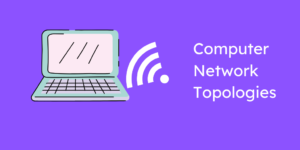Knowing How Smart Home Systems Work
Smart home systems are various and overlapping electrical and wireless technologies that allow a smart home or smart house to work as a single integrated unit. These can be accessed from a single place, such as a smartphone, television, tablet, laptop, or handheld device.
For example, one home automation system may operate door locks, thermostats, monitors, cameras, lights, and even appliances like the refrigerator. The intelligent device’s system is usually installed on a mobile or other networked device, and the user can choose when specific modifications should occur.
Understanding the nature of the systems requires a basic understanding of what a smart home is and the many technologies that support it.
The idea of a smart house has been around for a long time; in many ways, it is one of the oldest mind-fiction visions that is about to become a reality.
A classic scenario demonstrating the potential of a smart house is a person going home from work in their smart automobile.
As they reach their house, their smart car interacts with their garage, and the garage doors open automatically.
Furthermore, when they arrive home, their smart car will connect with their home, and their lights will turn on automatically.
A few years ago, these possibilities would have appeared far-fetched.
They are now on the verge of becoming a reality for anyone who desires them.
Many billions of gadgets are available with sensors that will allow them to communicate wirelessly over the internet, a scenario known as the internet of things.
What Are The Features Of a Smart Home?
Devices and commands that are simple to use, dependable, and safe enable the
Even simple home automation solutions such as video door entry, climate control, and lighting management enhance living environments. It is always possible to merge them with new functionality later.
The same device can manage many functions: a motion sensor can turn on the lights or report an incursion, depending on the time and purpose it was designed for.
Home automation options for you and your family
Home automation is described as multidisciplinary because it refers to those who install and handle other systems in a home. A home automation system can transform several qualities into various solutions that improve the building.
Installation is simple.
Using a twisted pair for the control system and “traditional” wires for the power system simplifies everything, including management. For example, it is simple to set up a routine to close roller shutters or turn off all lights.
Control from a distance
By using a smartphone, tablet, or computer, you can perform quick actions on numerous activities, as well as inspect and administer multiple functions remotely. Then, if the alarm goes off, you can receive a report and establish the ideal environment when you return home.
An easy-to-use interface
Because a single point controls the systems, it promises efficient, simple, and effective management of the residence’s systems. It streamlines communication with all devices administered by a central control point, such as a video touchscreen. Home automation is now accessible to everyone, thanks to user-friendly interfaces.
Conserving energy
The integration of climate control and lighting inside the home automation system allows for optimizing energy use.
Scalability and functional flexibility
You can update the system’s functionality at any moment without requiring further masonry work and build the system with basic features and then add some of them later.
How Do You Turn Your House Into a Smart Home?
Turning your home smart is one of the simple things to do, but it needs technical skills, and we need to take it one step after another. However, everyone must do a few things to prepare for their new and enhanced household appliances and smart devices.
1. Improve your WiFi. Because all smart home devices interact via the Internet, you’ll need to ensure that your WiFi is strong enough to handle information exchange. You may consider acquiring numerous routers if you have a larger home.
2. Determine your requirements. Determine what you want from a smart home, and prioritize the areas you wish to handle right away. Then, based on your study, you can easily select the smart home system, smart gadgets, and smart appliances that will fit your needs.
What Are Some Examples of Smart Home Ideas?
It’s best to inquire if you’re looking around your house and thinking about what conventional equipment you have can convert into smart devices.
To get you started, here’s a list of smart home ideas that you would like to consider:
Smart locks will keep your home safe. Replace your existing front-door lock with a smart lock to remotely lock and unlock your door, double-check that you locked the door after you’ve already left, and keep track of who has come and gone.
Smart security alarms will let you keep an eye on your property. Many smart home devices can remotely warn you of safety or security risks. For example, get alerts for leaks, leaving the garage door open, smoke when someone rings your doorbell, or if you left something plugged in that should have been turned off before you left the house, no matter where you are.
A smart thermostat help manage the home’s temperature and conserve energy. The fact is that a smart thermostat can learn your behaviors and adjust the temperature automatically based on your schedule. It also allows you to modify temps manually and remotely via an application.
Tasks can be delegated using a smart assistant. Such as virtual Google Home assistant or Amazon Echo, allows you to use voice commands to perform things like play music, browse the web, and control your smart home gadgets.
Smart appliances can help you save time on everyday duties. For example, an intelligent television, dishwashers, refrigerators, and washers and dryers all allow for remote access and control and alert you to information specific to each item.
For example, your washing machine may recognize when energy consumption is lowest in your location and switch on during that time. Even your refrigerator can scan your groceries and tell you when the eggs will expire or how much milk you still have!
Your smart light bulbs allow you to control your home’s illumination. Smart lights enable you to manage the lighting in every home area from your smartphone. If at all your kids forget to turn off the kitchen lights?
You can do it on your phone on your way to school. Configure your lights to turn on and off at certain times, and you’ll never have to worry again about someone forgetting to turn off the lights before you leave for the day.
With a smart and sustainable house, you may have the best of both worlds. Installing an electric car charging station in your garage, for example, allows you to update your home while also transitioning to a more sustainable lifestyle!
Smart Homes’ Benefits and Drawbacks
Many people research smart house ideas, how smart homes function, or specific task automation. Here are some advantages:
Smart homes provide you more control over your energy consumption by automating tasks like regulating temperature, turning on and off lighting, opening and shutting window treatments, and adjusting irrigation based on the weather.
Smart homes provide insights into energy consumption to help you become more energy-efficient and environmentally conscious.
Cons
Even when smart homes provide convenience and cost advantages, we still have challenges. Security flaws and bugs continue to afflict both technology creators and users. A skilled hacker, for example, can obtain access to the internet-connected equipment in a smart home, just as we have it in many areas for several. But have ways of also dealing with such issues when they arrive.
To reduce the danger of such attacks, use a strong password to safeguard smart appliances and gadgets, use encryption, and connect only trusted devices to one’s network.
Smart homes can identify locations where you’re using more energy than necessary, allowing you to cut back and save money.
The 21st century of smart home technology is intriguing, with almost limitless possibilities and combinations. As the smart home sector expands, so will the options and their impact on your daily life.




